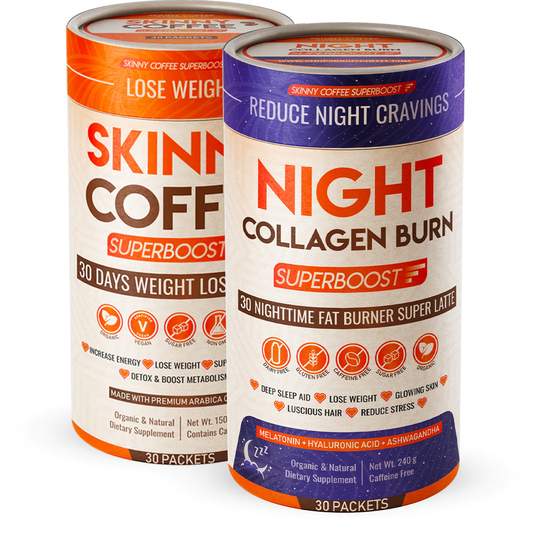
How to Become a Runner (Part 2)
Share
The first rule of running is that anyone can do it. If you can run, and if you run, you're a runner, and no one can take that away from you. The moment you step out the door, hit the pavement, and take off, you are welcomed into the fraternity of runners.
We all have our reasons, and if you've defined yours, here is the second part of this post with even more tips on how to start running.
Clothes and other gear
There is an entire industry based around running, gear and all the breakthrough technology that is just about promises to give you wings. Cool stuff will just give you the cool factor, it will not help you if you are just starting out. The only thing you really need is comfortable clothes and comfortable running shoes (not tennis or walking shoes, running shoes), but they don’t have to be expensive or brand new either.

Very often people spend a ton of money on gear and clothes before they even go for their first run. They spend a fortune on the stuff they don’t need because they feel they need to prepare. This is a mental trap. Since you have spent the money you are invested now and you get the feeling of achievement and involvement when you haven’t actually done anything – you just bought stuff you may never even use.

Cool gear, professional clothes and especially designed shoes are awesome, but only when you are already an experienced runner and you can judge what you need and what you most definitely don’t need. Expensive does not necessarily mean good, a pair of old running shoes you use for gardening will work just as well as a $200 pair of shoes with a cool name and a brand logo. It takes time to break in a pair of running shoes, too, so if you are a beginner and if you already own a pair of running shoes – use those. You’ll feel better, you’ll run better, you’ll have more money left in your pocket.
Sports bras for ladies are a necessity not an optional accessory. One word: gravity, you can’t argue with gravity.

Don’t overdress for your run, once you warm up you’ll feel comfortable in lighter clothes. If you are worried about getting cold, make sure your hands and feet are warm. Wear thick socks and a good pair of gloves and this will keep your body warm, too. There is a biomechanical reason for this that has to do with the way the heart pumps blood to the extremities but that’s not really important here. It’s good enough, right now, to know that it works.
Food and drink
The diet of a runner is a personal thing, different people respond to different regimens and only one thing remains the same: no fuel = no energy. You have to eat to run and run well, when you eat, how much and how often will depend on what you want to achieve.

When you are starting out you should be aware of the simple fact – if you want to lose weight you can’t eat more than you do right now, just because you run. Your diet should stay more or less the same. A run under an hour does not require any additional fueling up or any special food adjustments.
You don’t have to drink during a run if you don’t feel you need to. If you are not thirsty, there is no need to sip anything but if you get so thirsty your mouth goes dry, make sure you carry some water with you.

Otherwise, keep it simple:
Don’t go running thirsty. Drink some water if it’s a sunny day before you go, you will always get dehydrated during a run but it isn’t bad short-term. Sipping some water during a run is perfectly fine, especially if you are running long distance and in the sun, but it’s not mandatory.
Don’t go running hungry. If you feel you are that hungry that you can chew someone’s leg off, eat something before you go running even if you are just about to take off. A small banana or half a protein bar will do the trick most of the time. It’s not that you absolutely have to eat, but you don’t want to be distracted by hunger either.

Running is mostly mental. It really is all in your head, if you think you are starving you’ll perform worse than you otherwise would because you think you should. Some runners perform better running on empty because all of the resources in the body go into the running instead of into digesting the food (there is no multitasking well where the body’s processes are concerned) but it doesn’t mean you should do it too. Food and drink habits depend on each runner and you will be able to tell after a while what your thing is, when you begin, though, don’t think about it too much – it isn’t as important as one would imagine.
What to expect
You may feel out of breath, like you are not getting enough oxygen and your lungs are on fire- - that’s perfectly normal. That’s your aerobic capacity, your fitness levels that will eventually rise. You are not dying, there is nothing wrong with you. Everyone goes through the same thing when they are trying to do too much too fast. The best thing you can do is drop the pace and go slower.

The stitch you get in your side is a sign that your body isn’t getting enough oxygen and carbon dioxide is building up in your bloodstream – to get rid of the stitch, you have to simply outrun it. Start taking deeper breaths and run at a slower pace and it’ll be gone in a few minutes as your bloodstream oxygen level rises.
Warm ups and cool downs
The warm up and cool down stages can be part of your run, start and finish your run with a few minutes of a slow recovery runs to get your body temperature and your heart rate to its normal state. Warm-ups and cool-downs are literally what they are, the way to transition your body from a normal state to a very active state and back without putting additional stress on your body. Think of your body like a car, you wouldn’t go from zero to a hundred in a second if you don’t want to wreck it and you won’t take it out in a cold day without warming up the engine beforehand.

If you lead an active lifestyle already, you are likely not to need a warm-up. Everyone needs a cool-down, though. It can either be a fast walk or a light jog that is normally 5-10% of your total distance. You can also do some additional stretching after the run.
The Important Thing
What you have to understand is that most runners out there have no special abilities, we all started somewhere and we all struggle – present tense. It doesn’t get easier, not for anyone, but you get better, you always do. If you run – you are a runner, and every runner you meet will respect you and accept you because they know what it is like, they understand what you are going through. If you are out of shape and you go running, you may feel that other runners are judging you – they don’t. They celebrate and admire you, because what you are doing isn’t easy. What they are doing isn’t easy either, they just had more practice in making it look easy.

If you want to be a runner, be a runner. Even if you have never done it before, haven’t got any special gear and not entirely sure what you are doing. The form, the speed, the ability to cover serious distance will come to you eventually if you keep at it. Remember that a large part of it, all of the excuses and the reasons why you can’t do it or can’t do it today, are in your head. Sometimes the best thing you can do is to stop questioning and just go and run.











